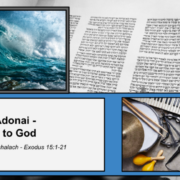This guest post is the D’var Torah that CBI member and cantorial soloist Ziva Larson offered at Shabbat Morning Services on Saturday, January 27, 2024.
Happy 2024! I love having two opportunities each year to begin again – first in the fall at Rosh Hashanah, then in the winter with New Year’s Day. Beginning again is a valuable spiritual practice, a reminder that we don’t have to be stuck in what was but rather can cultivate the promise of something new.
The big mitzvah associated with Chanukah is pirsumei nisa, “publicizing the miracle.” Tradition teaches us to place the Chanukah lights someplace where they will be seen. (Unless we fear for our lives, in which case tradition permits us to keep our light under the proverbial bushel.) We display our lights to publicize the miracle: the oil that lasted until new oil could be made; the leap of faith that led us to kindle light in the first place; the miracle of hope in times of despair.
Especially this year, holding fast to hope and to Jewish joy feels like a radical act… and a necessary one.
On the festival of Shemini Atzeret (October 7), our world tilted on its axis. Dancing with the Torah that night felt like an act of resistance, connectedness, and hope, even amidst our tears.
We’re writing with delight to share news of a new interfaith collaboration happening at CBI.
“We have fallen into the place where everything is music.” These are words from the Sufi mystic poet Rumi, whose work I love. In the translations I’ve seen, he is one of the most profound spiritual poets there is. For another version of those lines, here’s how western-Mass-based folksinger Kris Delmhorst sings them: “Now we’ve come to the place where everything is music — everything is music, (so) let it play!”
This year the month of April opens with Pesach. I love all of the shining moments around the wheel of the Jewish year, but ever since I was a kid, Pesach has been one of my favorites. (And it still is.) Studies have shown that the Passover seder is the one Jewish ritual most commonly celebrated in this country — from Jews who aspire to experience Shabbat each week, to Jews who may only engage in one avowedly Jewish celebration per year, this one is always on the list.
November this year mostly overlaps with the Hebrew month of Cheshvan. Among Ashkenazi Jews (Jews of Eastern European descent or who follow the customs of that part of the world) this month contains no holidays other than Shabbat.
As we approach the High Holy Days, we’ve entered a period of reflection and assessment. In addition to my own personal reflections, I am also very aware of the passing of one year and the beginning of the next in the communal life of Congregation Beth Israel. With a year under my belt as president, it is a time when I reflect both on what has gone well and what more we need to or can do.






 Photo courtesy of Len Radin
Photo courtesy of Len Radin





